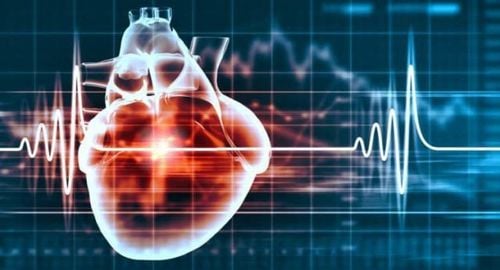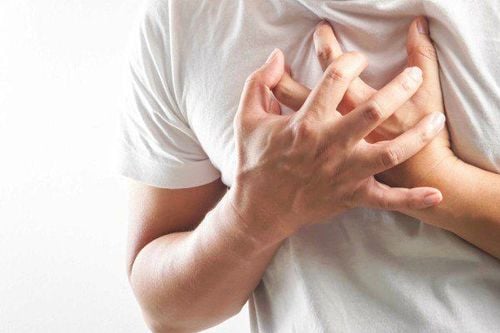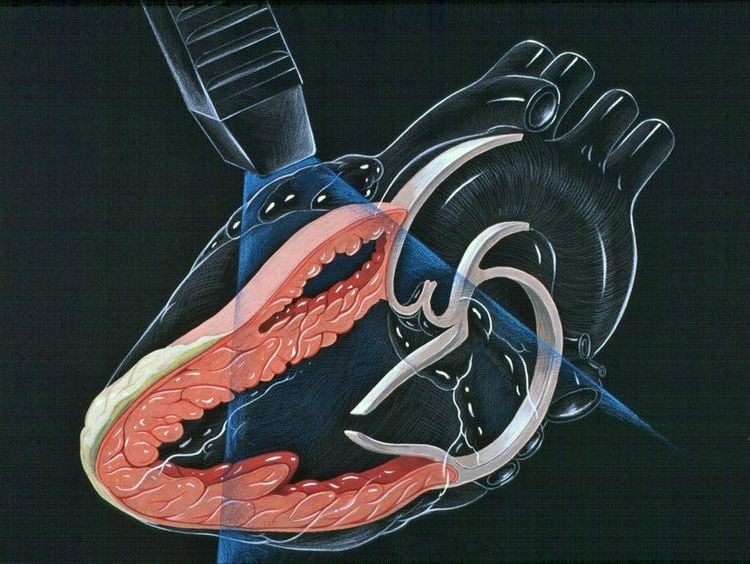This is an automatically translated article.
Posted by Master, Doctor Tran Hong Nhat - Interventional Cardiologist - Cardiovascular Center - Vinmec Central Park International General Hospital.Heart failure is a consequence of many cardiovascular diseases and is a major cause of death in patients with heart disease. Effective detection and treatment improves symptoms as well as survival prognosis for patients.
1. What is systolic heart failure?
Heart failure is a complex clinical syndrome that results from physical damage or dysfunction of the heart leading to the inability of the ventricles to receive or eject blood. According to classification, systolic heart failure is when the ventricular muscle does not contract effectively, the left ventricular ejection fraction decreases (EF < 40%).2. Causes of systolic heart failure
There are many causes of systolic heart failure, specifically:2.1. Coronary artery disease Myocardial infarction Myocardial ischemia 2.2. Chronic pressure load hypertension Hypertension Obstructive valvular disease 2.3. Chronic hypervolemic load valvular disease causing regurgitation Intracardiac catheterization (left to right) Extracardiac catheterization 2.4. Non-ischemic dilated cardiomyopathy Genetic or familial disorders Infiltrative disorders Drug or toxic injuries Metabolic diseases Viral or other infectious agents 2.5. Arrhythmia and heart rate Chronic bradyarrhythmia Chronic tachyarrhythmia

3. Symptoms of ventricular systolic dysfunction
Some symptoms of ventricular systolic dysfunction are as follows:Fatigue or shortness of breath on exertion. Shortness of breath when lying down – difficulty breathing while sitting. Cough on exertion or while lying with the head low. Paroxysmal nocturnal dyspnea. In addition, there are some other symptoms such as: leg edema, nervousness, dizziness, fainting, nocturia and oliguria ...

4. Heart failure grading
There are 4 levels of heart failure according to the New York Heart Association (NYHA) classification:Grade I: No limitation of the patient's movement. Ordinary physical activity does not cause fatigue, shortness of breath or palpitations. Grade II: Slight limitation of the patient's physical activity. Patients who are well at rest, normal physical activity leads to fatigue, palpitations, shortness of breath or chest pain. Grade III: Limit a lot of physical activity of the patient. Although the patient is well at rest, only mild exercise has symptoms. Grade IV: Cannot perform any physical activity without discomfort. Symptoms of heart failure occur even at rest, even a slight physical activity increases the symptoms.
5. Diagnostic technique for ventricular systolic heart failure
Doctors need to ask and examine the patient to guide the diagnosis of heart failure. In addition, patients need to perform more laboratory tests to contribute to confirm the diagnosis.5.1. Cardiac function assessment test Echocardiography Echocardiogram Doppler echocardiography is often used to evaluate left ventricular systolic function, with the advantages that it can be performed in the ultrasound room, or done right at the hospital bed in the hospital. emergency case. However, this technique also has the disadvantage that in patients with obesity, thick chest wall, the image quality is limited.
Cardiac Magnetic Resonance Ventricular radiograph 5.2. Diuretic Peptide Biomarker (BNP or NT - proBNP) is considered as a first-line marker in the diagnostic approach to heart failure. The diagnosis of stable heart failure is established when: BNP > 35 pg/ml or ProBNP > 125 pg/ml. Acute exacerbation of chronic heart failure or acute heart failure is diagnosed when: BNP > 100 pg/ml or Pro-BNP > 300 pg/ml.
ST2, Galectin-3 is used together with Diuretic Peptides in the diagnosis, monitoring, treatment and prognosis of patients with heart failure. ST2 and Galectin-3 help investigate myocardial damage and fibrosis, thereby predicting the risk of re-hospitalization and death in patients with heart failure. These two new biomarkers are more valuable in the prognosis of patients with heart failure.
5.3. Tests to help diagnose, detect aggravating factors and prognosis of heart failure ECG, chest X-ray film, echocardiogram, complete blood count, urinalysis; Electrolytes (including Calcium and Magnesium) Fasting blood glucose, blood lipids (total cholesterol, triglycerides, HDL-C, LDL-C) Serum creatinine (and eGFR calculation), liver enzymes, bilirubin, serum iron TSH, FT4 Evaluation of myocardial perfusion with imaging (echocardiography, magnetic resonance, SPECT) MSCT contrast-enhanced coronary artery or catheter angiography

5. Heart failure treatment
Heart failure is an incurable disease, whereby the treatment of heart failure reduces symptoms, prevents heart failure from progressing, and improves the prognosis of patients. To achieve these goals, the patient will be treated with the following methods:5.1. Lifestyle changes Good diet Regular exercise Don't smoke 5.2. Drug treatment Treatment of causes: hypertension, diabetes, treatment of heart valves, coronary artery disease ... Treatment of heart failure with drug groups: ACE inhibitors, receptor blockers, beta blockers, diuretic, digoxin... 5.3. Surgical and procedural treatment Left ventricular assist device implantation Myocardial resynchronization device implantation Mitral valve clamp Heart transplant To determine the state of heart failure, the degree of heart failure, the cause of the heart failure, and other possible causes of heart failure. With comorbidities, patients can choose the Heart Failure Checkup Package at Vinmec International General Hospital. Subjects who should be screened for cardiovascular disease annually include:
Group 1: Customers who have no symptoms of heart failure but have other cardiovascular diseases (hypertension, angina, diabetes, dysrhythmias). heartbeat, ... ). Or people in middle age (men ≥ 45 years old, women ≥ 50 years old), especially those with tobacco addiction, alcohol abuse or obesity. Group 2: People with common symptoms of heart failure such as shortness of breath, shortness of breath, persistent dry cough, feeling like body weakness, heaviness in the chest, dizziness, dizziness, fainting spells, pulse heart failure, edema, little urine, liver irritation, swollen neck veins,... When choosing to use the Heart Failure package at Vinmec International General Hospital, customers will be examined by Cardiology specialist, general practitioner. blood and urine cell analysis, quantification and measurement of substance activity in the blood, electrocardiogram, routine and stress echocardiography, chest x-ray along with a number of other services.
Please dial HOTLINE for more information or register for an appointment HERE. Download MyVinmec app to make appointments faster and to manage your bookings easily.














